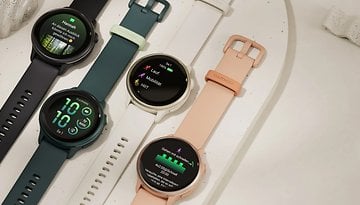Leak: Fitbit Charge 5 with a new design - and a new sensor?


Read in other languages:
The first batch of images of the Fitbit Charge 5 is here! The renders show the tracker from all sides - and reveal an interesting detail besides a finally, finally, finally more modern design. There is also the possibility of a new sensor.
- Fitbit Charge 5 is leaked in render images.
- Finally comes with a rounder, more modern design.
- Possibly a new sensor on board.
There was a first look at the Charge 5 quite a few weeks ago - but only from the front. Now, thanks to Evan Blass, we can marvel at the complete design of the fitness smartwatch. I won't keep you in suspense for long - this is what the Fitbit Charge 5 looks like:

An interesting detail here are the long, shiny metallic stripes on both sides. While colleagues from The Verge assume these are capacitive buttons, I think the metal contacts are (also) a sensor. After all, Fitbit did a very good job at hiding the capacitive button on the Sense and Versa 3.
So what kind of sensor could this be? It's conceivable, for example, that the ECG sensor from the Sense will now make it into the Charge series. Or possibly we'll also see an impedance analysis sensor on the Charge 5 like on the Samsung Galaxy Watch 4 (Classic). Bioelectrical impedance analysis can be used to estimate body composition, such as muscle mass, body fat percentage or water percentage.

Possibly, this could also compensate for a weakness of Fitbit's Aria scales: After you stand only with your feet on the body fat scales, these only record the composition of the lower half of the body. Using the smartwatch, the composition of the upper half of the body could also be recorded, which would improve the overall accuracy.

More detailed leaks including official renders usually also mean that a launch is imminent. So in the next few days or weeks, we should learn what's behind the sidebars. And then, we might also learn what the level indicator on the Charge 5's watch face refers to. Since Fitbit is currently focusing on holistic fitness, it could be a kind of "body battery" indicator like the one displayed by Garmin.
This news article was translated from NextPit.de as part of the hiring process of a new editor for NextPit.
Source: Evan Blass (Twitter)



















